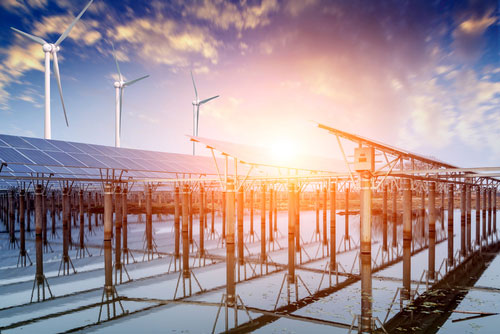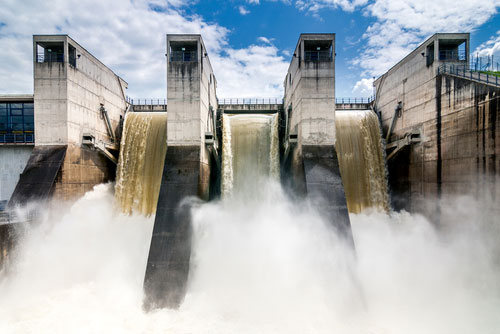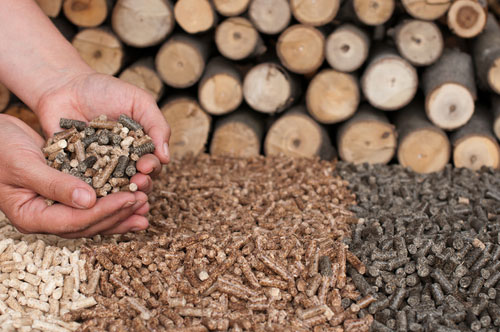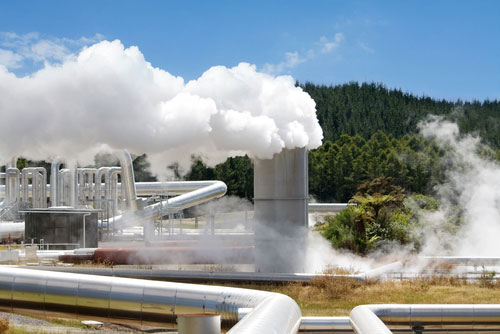Answer these question:
1.What is a carbon footprint?
2.Why is oil ia a non-renewable energy?
3.What are the disadvantages of nuclear power?
4.What should we do to reduce our electric bills?
5.What should the goverment do to reduce the use of petrol?
Hãy nhập câu hỏi của bạn vào đây, nếu là tài khoản VIP, bạn sẽ được ưu tiên trả lời.

1. what / a / carbon / is / footprint
→ What is a carbon footprint ?
2. oil / is / why / energy / source / non-renewable / a
→ Why is oil a non-renewable source energy ?
3. should / we / why / energy / save ?
→ Why should we save energy ?
4. the countryside / a big city. / has / fewer problems / than
→ The countryside has fewer problems than a big city .
mình không chắc chắn lắm đâu vì phần sắp xếp câu mình còn rất yếu. :>

→Natural Gas← viết về cái nè nhé
A natural gas flame
Ervins Strauhmanis, Flickr (link is external)
A gas that is made up mostly of methane and found near other fossil fuels, like coal. Methanogenic processes occurring in landfills and marshes also produce natural gas. Like petroleum, natural gas must first be processed before we can use it as a fuel. It is important to remove most of the other components of natural gas until it is almost purely methane. When combusted, natural gas produces only about half the greenhouse gas emissions as coal does, making it a popular fossil fuel in our increasingly carbon-conscious society. Take a look at these oil- and gas-related maps (link is external) to learn more about natural gas production and reserves in the United States.

1.How many types of energy sources are mentioned in the text? What are they?
Two. They are renewable and non-renewable.
2.What are the disadvantages of hydro and nuclear power?
Hydro power is limited because dams cannot be built in certain areas. Nuclear power is dangerous.
3.Why do you think the wind and the sun are called alternative sources of energy?
Because they are natural sources of power and we use them instead of non-renewable sources to get the electricity we need.
4.What types of energy does Viet Nam use most?
We use non-renewable sources of energy the most but we are increasingly using hydro power.
5.What does the professor think Viet Nam will use more in the future?
He thinks Viet Nam will use the wind and the sun as alternative sources of energy in the future

Vào đây hỏi nhé bạn:
@Mến Vũ,@phương linh,@Vũ Thị Phương,@Linh Diệu,@hoang khanh linh

1. Can natural resources be used up someday?
=> Yes, they can.
2. What should we do if we don’t want the natural resources to run out of?
=> We should use them economically and try to find out alternative sources of power
3. Why don’t people prefer using nuclear power?
=> Because it is very dangerous.
4. What does the radioactivity cause for young people?
=> It causes cancer and may badly affect the future generations.
5. What will you do to protect your environment?
=> I will use natural resources as economically as possible.

Renewable energies (or renewables) are ways to generate energy from (theoreally) unlimited natural resources. These resources are either available with no time limit or replenish more quickly than the rate at which they are consumed.
Renewable energies are generally spoken of as opposed to fossil fuel energies. The fossil fuels’ stocks are limited and non-renewable in the human timescale. The most known examples of these resources are coal, oil or natural gas. On the contrary, renewable energies are produced from renewable sources. Here, we’re talking about energy coming from solar rays, wind or water cycles – all theoreally unlimited on a human scale time.
Renewable energies are also often referred to as “green energies” or “clean energies”. Still, this doesn’t mean that these energies aren’t harmful to the environment and have zero impact. Nonetheless, they have a low environmental impact compared to fossil fuels. That’s why they’re increasingly becoming important elements in companies’ CSR strategies in terms of sustainable development.
There are several types of renewable energies that are produced by different sources such as the sun, wind or water. In fact, these renewables’ power consumption has been growing over the last year. They have provided 8% of the world’s electricity in 2017 and they now cover 1/3 of the power mix in Europe. At the same time, the energy grid gets 1/4 of the total energy in China and 1/6 in the United States, India, and Japan. Let’s learn more about them below.
1 – Solar Energy

This type of renewable energy comes directly from the capture of solar radiation. Here, the solar radiation is absorbed by specific sensors and rebroadcasted following 2 possible operation modes:
Examples of Solar Energy in the World
It’s estimated that in 2017 1,6% of the worldwide generated energy came from solar sources. At the same time, solar power also contributed to 20% of the total energy growth in this same year. Some of the most known sources of solar energy are:
Is Solar Energy Renewable or Nonrenewable?
Solar energy is inexhaustible in the sense that it will cease once the solar system’s star – the sun – dies. However, many people wonder if, from a perspective of human’s being able to capture and use solar energy in the long-term, whether solar energy is renewable or nonrenewable.
[Full answer available soon.]
2 – Windpower, a Renewable Energy
Wind power is another renewable energy. Here, the wind’s kine energy makes turbines spin and creates a mechanical movement. Afterward, a generator transforms this mechanical energy into electricity. There are several types of wind renewable energies: onshore wind turbines, off-shore wind turbines and even floating wind turbines. But the operating principles are basically the same for all these types of wind-generated energy.
Examples of Wind Power in the World
Wind power continues has also been growing, In fact, it provided 4.4% of global power generation in 2017. The highest installed wind capacity belongs to China (164GW). At the same time, in the EU, wind power provides 15% or more of the energy generated in several countries such as Germany, Portugal or Lithuania. Some of the most known sources of wind power energy are:
3 – Hydro-Electric Power

Hydro-electric power consists in the transformation of the kine energy of the water (from rivers, dams, marine currents or tides) into mechanical energy by turbines.
Examples of hydro-electric power in the world
4- Biomass

Biomass is made up of organic materials from plants or animals that contain stored energy. The combustion of these natural materials produces renewable energy. Some examples of generating energy from biomass are:
Related content:
Examples of Biomass Energy in the World
Some of the most known biomass power plants in the world are:
5- Geothermal Power as a Renewable Energy

The Earth generates and stores geothermal energy. In other words, radioactive materials decaying inside the Earth are emitting energy. Electricity can be created using directly or indirectly this energy, depending on the technology implemented. There are 3 main ways to use geothermal energy:

1. There are 10 types of energysources. They are: solar energy, wind energy, geothermal energy, hydrogen energy, tidal energy, wave energy, hydroelectric energy, biomass energy, nuclear power, fossil fuels ( coal, oil and natural gas).
2. I can use less electric, use more natural energy,...
3. Renewable energy means the energy never exhausted such as solar energy, wind energy,...
4. I think my carbon footprint is medium.
5. Yes, I have.

Đọc và trả lời câu hỏi
Fossil fuels are non -renewable energy soircecs.They include oil,coal,and natutal gas.They can be used to create energy, generate electricity,or drive big machinery.Unfortunately,they are harmful to the environment. Viet Nam still relies mostly on non-renewable energy sources, however,hydro power is increasingly used here too.
Hydro and nuclear power can generate a great deal of energy. They are renewable and plentiful.However,hydro power is limited because dams cannot be built in certain areas.Nuclear power can provide enough electricity for the world´s needs, but it is dangerous.
The sun and the wind are other alternative sources of energy.
1)What are non-renewable energy sources?
Fossil fuels are non -renewable energy soircecs.
2)What can non-renewable energy soirces be used?
They can be used to create energy, generate electricity,or drive big machinery.
3)Why is hydro power limited?
Because dams cannot be built in certain areas
4)Can nuclear power provide enought electricity for the world´s needs?
Yes, it can
#Yumi

Coal, oil, and natural gas supply modern civilization with most of irs power. However, not only are supplies of these fuels limited, but they are a major source of pollution. Therefore, it's important to improve, explore and develop such alternative energy sources as nuclear, water, solar and wind power. Each of these alternatives, however, has advantages and disadvantages.
Nuclear power plants efficiently produce large amounts of electricity without polluting the atmosphere; however, they are costly to build and maintain, and they create the difficult problenı of what to do with nuclear waste. Hydroelectric power is inexpensive and environmentally safe, but impractical for communities locnted far from moving water.Wind power is a pollution-free source renewable energy but it cannot be used many parts of the world where there is insufficient wind. Solar power renewable, it does not cause pollution and it does not add the earth's heat load. However, it ia dilficult to coilect and store. Solar power also requir eensive equipnent
Every source of energy has its disadvantages. One way to minimize them is to use less energy. Conservation efforts coupled with renewable energy resoucs wll ensure supplies of clean, affordable energy for humanity's future.
1. Coal, oil and natural gas .............
a. are very great in amount
c. pollute the atmosphere
b. will never be used up
d. supply most of its power
( Mk đã chú thích bằng cách in đậm key word/ sentense ở trên đoạn văn nhé.!!! )
2. Nuclear power plants
a. are difficult to build ..............
c. are very cheap to maintain
b. pollute the atmosphere
d. create the problem of nuclear waste
( Câu a,c ko đúng vì phía trên họ nói là they are costly to build and maintain : Chúng thì quá là đắt đỏ để mà xây dựng và duy trì ; còn câu c thì phía tren họ nói là without polluting the atmosphere : ko hề gây ôi nhiễm tới không khí. )
3. Wind power...............
a. cannot be used in places that has strong wind
b. is never completely used up
c. is a source of pollution
d. cannot replace itself .
( Câu này hơi khó hơn, mk phải dịch một chút Wind power is a pollution-free source renewable energy but it cannot be used many parts of the world where there is insufficient wind: Năng lượng gió là nguồn năng lượng tái tạo không ô nhiễm nhưng nó không thể được sử dụng nhiều nơi trên thế giới, những nơi mà không có đủ gió. )
4. What is the advantage of these alternatives?
a. They are environmentally friendly energy sources
b. They are non renewable forms of energy
c. They are all very practical
d. They are inexpensive to exploit
( Bn xem mấy câu mk đánh dấu trên đoạn nha trong câu đó sẽ có key words/ sentences cho đáp án nha .!!! )
5. From the passage, it can be inferred (suy ra) that to solve our energy problem...................
a. we will have to stop using many of our modern conveniences
b. scientists will have to find one major source of nonpolluting energy
c. scientists will have to find ways to increase our supplies of coal, oil, and gas
d. a combination of conservation and invention will be needed
(Cái này nằm ở đoạn cuối : Conservation efforts coupled with renewable energy resources will ensure supplies of clean, affordable energy for humanity's future : Sự nỗ lực bảo tồn cùng với các nguồn năng lượng tái tạo sẽ đảm bảo nguồn cung cấp năng lượng sạch, giá cả phù hợp cho tương lai của toàn nhân loại )
Tick cho mk nha!!!
Sai đề rồi nha bạn Carbon không có nghĩa còn footprint là dấu chân
carbon là các-bon mà bạn